We use information collected through cookies and similar technologies to improve your experience on our site, analyze how you use it and for marketing purposes.
Your privacy settings
We and our partners use information collected through cookies and similar technologies to improve your experience on our site, analyze how you use it and for marketing purposes. Because we respect your right to privacy, you can choose not to allow some types of cookies. However, blocking some types of cookies may impact your experience of the site and the services we are able to offer. In some cases, data obtained from cookies is shared with third parties for analytics or marketing reasons. You can exercise your right to opt-out of that sharing at any time by disabling cookies.
Manage Consent Preferences
Necessary
Always ON
These cookies and scripts are necessary for the website to function and cannot be switched off. They are usually only set in response to actions made by you which amount to a request for services, such as setting your privacy preferences, logging in or filling in forms. You can set your browser to block oralert you about these cookies, but some parts of the site will not then work. These cookies do not store any personally identifiable information.
Analytics
These cookies and scripts allow us to count visits and traffic sources, so we can measure and improve the performance of our site. They help us know which pages are the most and least popular and see how visitors move around the site. All information these cookies collect is aggregated and therefore anonymous. If you do not allow these cookies and scripts, we will not know when you have visited our site.
Embedded Videos
These cookies and scripts may be set through our site by external video hosting services likeYouTube or Vimeo. They may be used to deliver video content on our website. It's possible for the video provider to build a profile of your interests and show you relevant adverts on this or other websites. They do not directly store personal information, but are based on uniquely identifying your browser and internet device. If you do not allow these cookies or scripts it is possible that embedded video will not function as expected.
Google Fonts
Google Fonts is a font embedding service library. Google Fonts are stored on Google's CDN. The Google Fonts API is designed to limit the collection, storage, and use of end-user data to only what is needed to serve fonts efficiently. Use of Google Fonts API is unauthenticated. No cookies are sent by website visitors to the Google Fonts API. Requests to the Google Fonts API are made to resource-specific domains, such as fonts.googleapis.com or fonts.gstatic.com. This means your font requests are separate from and don't contain any credentials you send to google.com while using other Google services that are authenticated, such as Gmail.
Marketing
These cookies and scripts may be set through our site by our advertising partners. They may be used by those companies to build a profile of your interests and show you relevant adverts on other sites. They do not store directly personal information, but are based on uniquely identifying your browser and internet device. If you do not allow these cookies and scripts, you will experience less targeted advertising.
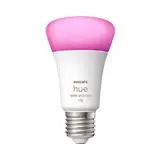
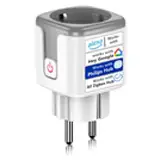
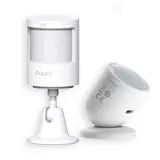
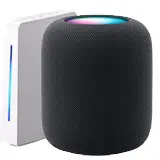
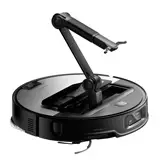

How to have a smart home without a central hub
Do you dream of a smart home, full of lights that dim on their own and appliances that obey your voice? You no longer need a central hub to make it happen! Technology has advanced so far that you can create a smart ecosystem without the complexity of a centralized device. Forget about complicated and expensive configurations. Discover how to transform your home into a smart home, step by step, and without breaking the bank.
The Decentralized Smart Home Revolution
In the past, to have a smart home, you had to buy a hub. This device acted as the brain, controlling all your connected devices. But now, many smart devices connect directly to your Wi-Fi network. This means you can control them from your smartphone, tablet or even with your voice, without the need for a hub. The era of the decentralized smart home has arrived, offering unprecedented flexibility and simplicity.
What does "No Hub Central" mean?
It means that each smart device works independently. It connects to your Wi-Fi network and is controlled directly through an app on your phone or by voice commands through a virtual assistant such as Alexa or Google Assistant. There's no single point of failure to stop your entire system. Plus, it's easier to start with a few devices and expand your smart home little by little.
Smart Devices That Do Not Require a Hub
The key to a hub-free smart home is choosing the right devices. Fortunately, there are a wide variety of options available: It is essential to research and select those devices that are compatible with each other and offer useful functions for day-to-day life. In addition, by following the smart home trendsIn addition, you can optimize energy efficiency and improve the comfort of your home. Finally, do not forget to consider security, as many of these devices can connect to Wi-Fi networks and it is essential to protect your information. When selecting devices, it is important to consider aspects such as compatibility between brands and protocols. It is also advisable to evaluate the ease of use and security of each device, since they are aspects to consider in an intelligent system. Making informed decisions will ensure a smoother and more effective experience when integrating technology into the home.
How to Configure Your Smart Home Without a Hub
Setting up your smart home without a central hub is easier than you think. Follow these steps:
Advantages and Disadvantages of a Hubless Smart Home
Like everything else, having a smart home without a hub has its advantages and disadvantages:
Tips for a Successful Smart Home Without a Hub
Here are some tips for getting the most out of your hubless smart home:
Strengthen Your Wi-Fi Network
A robust Wi-Fi network is crucial for a hub-less smart home. Too many connected devices can slow down your network. Consider investing in a high-quality router or Wi-Fi mesh system to extend coverage and improve performance. Make sure your router has enough bandwidth to support all your connected devices.
Prioritize Safety
Secure your Wi-Fi network with a strong password and enable WPA3 encryption (if your router allows it). Keep your router's firmware up to date to protect against security vulnerabilities. Also, change the default passwords on your smart devices and enable two-factor authentication whenever possible.
Choose devices from recognized brands
Opt for devices from reliable brands with good reviews. This ensures that you will receive software updates and technical support in case of problems. In addition, reputable brands usually have better security standards.
Check Compatibility
Before purchasing a device, check if it is compatible with your preferred virtual assistant (Alexa, Google Assistant, etc.). This will allow you to control the device with your voice. Also, check if the device is compatible with other devices you already have in your smart home.
Keep Software Up to Date
Regularly update the software of your smart devices and router. Software updates often include security enhancements and bug fixes. Enabling automatic updates can help keep your devices protected.
Create Routines and Automations
Make the most of your smart home by creating routines and automations. For example, you can program lights to turn on at dusk or automatically turn off when you leave the house. You can also create routines that are activated by voice commands, such as "Alexa, goodnight" to turn off the lights, lock the door and adjust the thermostat.
Consider a Hub if Necessary
Although this article focuses on smart homes without a hub, in some cases, a hub can be beneficial. If you have many devices of different brands or if you need more advanced functionality, a hub can simplify setup and improve compatibility. Consider a hub if you run into limitations with a hub-less approach.
Examples of Hubless Automation
Here are some practical examples of automations that you can create without a central hub:
Conclusion: A Smart Home Within Everyone's Reach
Creating a smart home without a central hub is easier and more affordable than ever. With careful planning, choice of compatible devices and a robust Wi-Fi network, you can enjoy the convenience and security of a smart home without the complexity of a centralized hub. Start small, experiment with different devices and automations, and discover how technology can improve your daily life. Transform your home today and share your experiences in the comments! Explore the various options available on the market to customize your smart home and its benefitsby tailoring it to your specific needs. From smart lights that automatically adjust their brightness to thermostats that learn your preferences, each device contributes to a more comfortable and efficient life. Feel free to research and share tips with other enthusiasts to maximize the potential of your smart home.
Related Posts
Home Assistant: Automation without coding
Can you imagine controlling the lights in your home by voice, or having the blinds lower themselves at dusk, or having the heating turn on automatically when you get home? All this, and much more, is possible with home automation. And best of all: you don't need to be an expert programmer to ...
Nighttime automation: lights, alarms, and comfort
Can you imagine coming home after a long day and having the lights come on automatically? Or waking up gently with a simulation of the sunrise? Night automation is much more than just technology. It's transforming your home into a smart space that takes care of you, your safety and your comfort while you sleep.
How to program your home for vacations or extended absences
Your dream trip is coming, congratulations! But before you get on the plane or start the car, there's one important task: preparing your home for your absence. An unattended home can be a magnet for trouble, from petty theft to costly breakdowns. Don't worry, it doesn't have to be complicated. Here's a step-by-step guide to ...
How to create automated scenarios for different times of day
Can you imagine a home that adapts to you, automatically, all day long? A smart home that anticipates your needs and makes your life easier. This is possible thanks to home automation, and best of all, it's easier than you think. Home Automation: A Smart Day Home automation is a ...